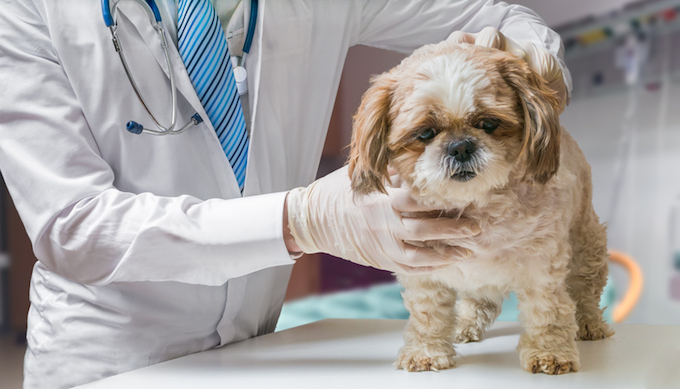Lung lobe twisting in dogs causes a dog’s vessels and bronchus to become obstructed. The condition also causes a number of complications.
Generally, male dogs suffer from the condition more than female dogs. Additionally, Pugs develop the condition more often than usual.
Unfortunately, the condition is very serious. In some cases, the condition can be life-threatening.
Technically, the condition is also known as lung lobe torsion in dogs.
If you see the signs of the condition in your dog, then get to a veterinarian for a proper diagnosis and treatment.
Here’s what you should know about the symptoms, causes, and treatments for the condition.
Symptoms of Lung Lobe Twisting in Dogs
The condition produces a wide range of symptoms. For instance, some of the most common symptoms include:
- Coughing
- Coughing with blood
- Breathing problems
- High heart rate
- Cyanosis (mucus membranes turning blue)
- Loss of appetite
- Avoiding exercise
- Vomiting
- Diarrhea
- Shock
- Fever
- Pain
- Acting lethargic
Causes of Lung Lobe Twisting in Dogs

The cause of the condition can be spontaneous or it can involve a pre-existing condition. Also, the cause can be unknown. This is called being idiopathic.
Generally, male dogs develop the condition more than female dogs. Also, deep-chested dogs like Afghan Hounds are most at risk of it.
However, smaller breeds can also suffer from it. For example, the following breeds develop the condition more than usual:
- Pugs
- Shih Tzu
- Dachshund
- Miniature Poodle
- Beagle
- Yorkshire Terrier
Treatments for Lung Lobe Twisting in Dogs
Firstly, your vet will ask about your dog’s symptoms. Secondly, your vet will ask about your dog’s full medical history. This will include breed-specific problems.
Thirdly, a full physical examination will be carried out. Blood and urine tests will be taken. The number of white blood cells can help to diagnose the condition.
Additionally, X-rays and ultrasounds can be used. Also, fluid samples can help to confirm the condition.
Unfortunately, many dogs with this condition need to be hospitalized. This is to stabilize their condition. Also, oxygen and fluid therapy will be used.
Ultimately, surgery is often needed. This is to remove the problematic lobe.
While recovering at home it is important to provide your dog with a quiet and calm environment. Usually, pain medication will be prescribed. As always, if your vet prescribes your dog any medicine, make sure to stick to the correct dose and frequency instructions. Also, complete the full course of medicine.
Have you ever cared for a dog who suffered from this condition? How did your vet help your dog recover? Let us know in the comments section below.





